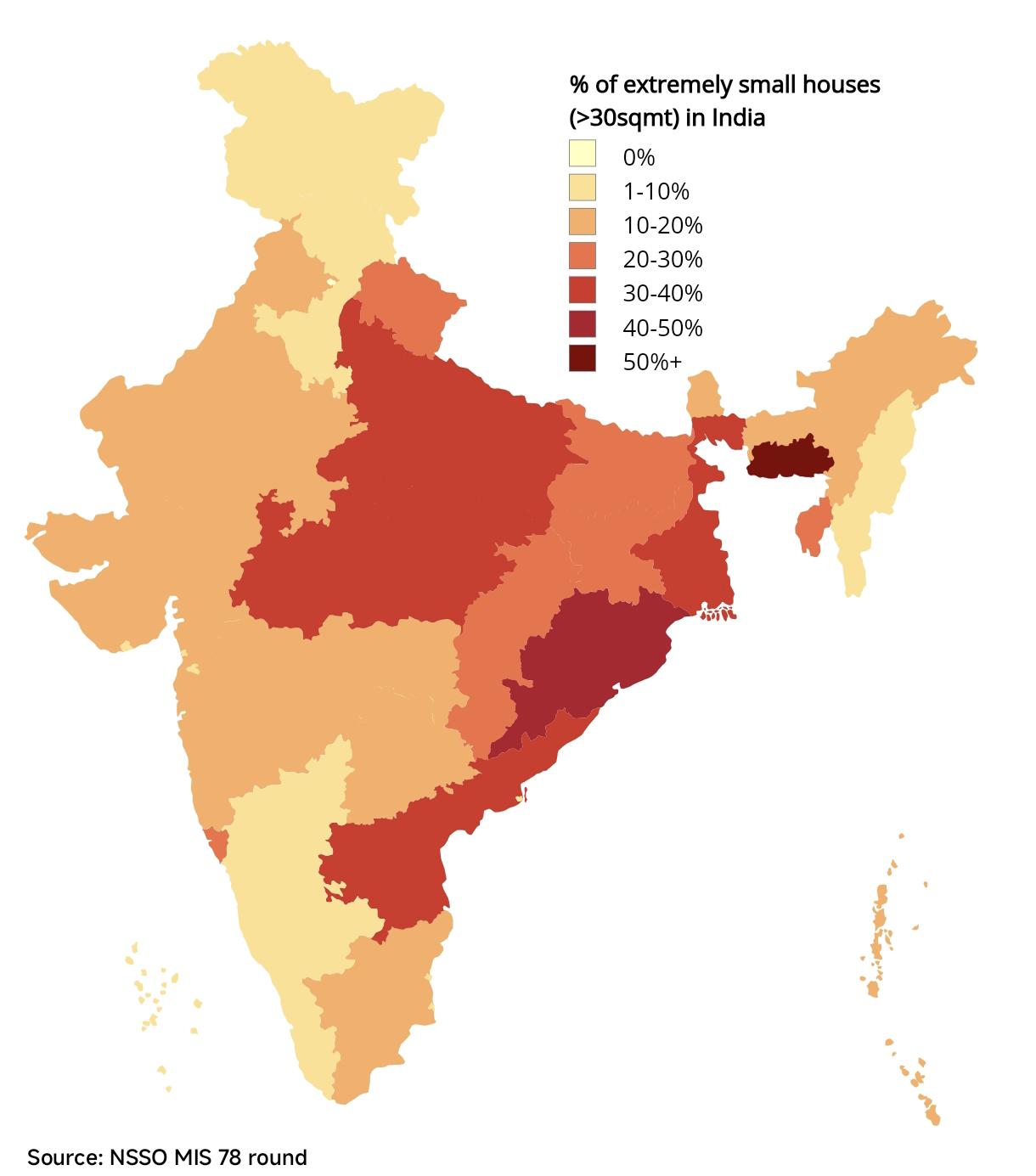Percentage of Extremely Small Houses in India Map


Alex Cartwright
Senior Cartographer & GIS Specialist
Alex Cartwright is a renowned cartographer and geographic information systems specialist with over 15 years of experience in spatial analysis and data...
Geographic Analysis
What This Map Shows
The map titled "Percentage of Extremely Small Houses in India" visualizes the distribution and prevalence of houses measuring less than 30 square meters (approximately 322 square feet). This category of housing, often referred to as extremely small houses, highlights a significant aspect of India's housing landscape, particularly in the context of urbanization, poverty, and housing policy. As we delve deeper into the topic, we will examine the implications of such small living spaces and what they reveal about the socio-economic conditions in various regions of India.
Deep Dive into Extremely Small Houses in India
Housing is a fundamental human need, and the size of a dwelling can significantly impact the quality of life. In India, extremely small houses represent a unique challenge and an intriguing aspect of the country's housing dynamics. The prevalence of these compact living spaces often reflects broader socio-economic trends, including urban migration, population density, and income levels.
Interestingly, the concept of extremely small houses is not just a matter of physical space; it also encompasses issues of accessibility, affordability, and sustainability. Many families in India find themselves living in cramped quarters due to rising real estate prices, especially in urban areas. According to recent census data, a considerable portion of the Indian populace resides in homes that fall within this extremely small category, particularly in metropolitan cities.
Have you ever wondered why some regions show a higher percentage of extremely small houses? The answer lies in the intricate relationship between urbanization and economic conditions. Cities such as Mumbai and Delhi have witnessed a surge in population due to rural-to-urban migration, leading to overcrowded living conditions. In these urban hubs, the demand for housing far outstrips supply, forcing many to settle for smaller accommodations.
Moreover, the design and structure of these extremely small houses often differ significantly from larger homes. Many are constructed using local materials and may lack basic amenities, which can further exacerbate living conditions. The reality is that while these homes may be small, they often house entire families, leading to challenges related to privacy, sanitation, and overall well-being.
Regional Analysis
When we analyze the map, we can see distinct regional variations in the prevalence of extremely small houses. For instance, states like Maharashtra and Uttar Pradesh show notably high percentages of extremely small houses, reflecting their dense populations and urban centers. In contrast, regions such as Himachal Pradesh or Uttarakhand, which are more rural and less densely populated, exhibit lower percentages of such housing.
Interestingly, the urban-rural divide is stark in this context. In urban areas, where housing demand is high and space is limited, families often resort to smaller homes. Conversely, rural areas tend to have more land available, allowing for larger housing structures. This disparity raises questions about the future of housing policy in India. Will the government prioritize affordable housing solutions? How will urban planning evolve to accommodate growing populations?
Significance and Impact
Understanding the prevalence of extremely small houses in India is crucial for several reasons. Firstly, it sheds light on the challenges faced by millions of citizens and highlights the urgent need for comprehensive housing policies that address affordability and accessibility. The current trend indicates that without intervention, the problem will only intensify as urban areas continue to grow.
Moreover, the health implications of living in extremely small houses cannot be ignored. Overcrowding can lead to increased transmission of diseases, mental health issues, and overall poor quality of life. Thus, addressing housing shortages and improving living conditions are not just economic concerns; they are fundamental to public health and social welfare.
In conclusion, the map illustrating the percentage of extremely small houses in India provides valuable insights into the country's socio-economic landscape. It encourages us to reflect on the broader implications of housing policies and the need for sustainable urban development. As we move forward, understanding these dynamics will be essential in creating a more equitable and livable environment for all citizens.
Visualization Details
- Published
- October 3, 2025
- Views
- 44
Comments
Loading comments...